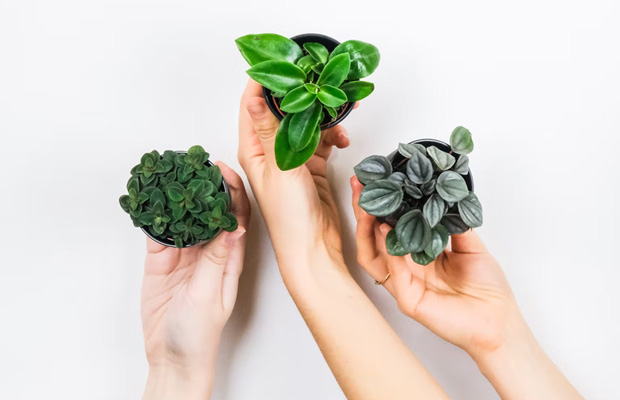How Many Types Of Peperomia Are There? The Ultimate Guide to Peperomia Varieties

How Many Types Of Peperomia Are There? The Ultimate Guide to Peperomia Varieties
Peperomia is part of the Piperaceae family of plants and has over 1500 thousand different varieties. The plant is native to Central and South America and flourishes in a more warm and tropical/subtropical climate.
It prefers to grow on decaying wood in its native habitat because the surface is rich in essential nutrients. The plant has widely been recognized as an omen of good luck, and the custom was to give the plant as a reassurance that everything is going to be okay. The practice was particularly prevalent in what is now Brazil, where it is still widely practiced.
The plant is, according to some, one of the most ideal indoor plants to have around the house, due to its resilience to different conditions and easy maintenance. In the text below, we’ll discuss some of the most popular and well-known types of Peperomia, and we hope it will make it easier for you to decide which one to get.

The “blunt-leaved” Peperomia obtusifolia is one of the many varieties of this plant and is generally referred to as the pepper face or baby rubber plant, it is also known as the “blunt-leaved” as the Latin word obtusifolia means exactly that. The plant is native to Mexico and the Caribbean, it also can be found in today’s Florida, mostly subtropical regions with a pleasant climate. The plant grows up to 25 cm in height and its recognizable white flowers are about 10 cm long. As with most plants from the family, it requires humidity and a temperature around 15 degrees Celius which makes it perfect for indoor keeping, except in the summer as you’ll want to keep it in the shadows. The plant is known for its beautiful, almost heart-like-shaped leaves, and is easy to maintain.
One relative of the plant, quite popular as well, is the Peperomia Orba. Its similar shape gets it easily confused with the obtusifolia, however, it has smaller leaves and a lighter color as well.
Anyway, both plants will look beautiful on your nightstand or kitchen.
Ferreyra
This particular variety of the popular plant has a more unique shape and is generally recognizable due to its thin and sharp leaves. It is mostly native to South America, more specifically Peru, and has long been regarded as the perfect room decoration. It produces mostly yellow flowers and those of a brighter color. The reason it is known as the perfect room decoration is its size, as the height does not precede 7 cm in some cases, although it can grow as tall as 15 in others. However, it is still small enough to fit on the window, and this might be a perfect location as it requires exposure to sunlight and temperature. As you’ve probably noticed by now, there are several varieties of Peperomia plants similar in their looks, and one interesting cuisine of this plant is the Columella. Now, it has a more unique shape and can withstand harsh conditions, and does not require a lot of maintenance. It gets often confused with a cactus due to its unique shell-like leaves, sharp around the edges with a bit of dark color. Both plants are great for smaller rooms and apartments with less space, as they do not take up more than a few square centimeters, and you do not have to worry about watering them every day.
The winner of the beauty pageant – The Peperomia Clusiifolia
Often known under its pseudo name the “Jelly”, this variety of the Peperomia plant carries the title of beauty queen as its uniquely colored leaves stand out from the crowd. The long and wide leaves are characterized by a darker red color, almost burgundy around the edges, and the contrast of colors creates a mesmerizing look.
The plant is non-toxic for pets of any sort and harmless for humans, it requires humidity and regular watering, and also a bit of fertilizer from time to time. The height makes it perfect for the dining table or living room, as it goes up to 25 to 30 cm. The plant is native to what is now Venezuela and also the West Indies. Similar in color, though not shape and size, is the “Ruby Cascade“, though in the case of this plant, whole leaves are red and burgundy and others are green creating an almost mosaic-like look.

The office table plant
Last but not least, the Peperomia Rubella is one of the smaller kinds and perfect for your office table. In height, it is almost a dwarf, and the size makes it perfect for smaller spaces. It is non-invasive and still beautiful, with small, round-like leaves and easy to maintain. From time to time, spray some water, and make sure it is exposed to the sun. A few of them and you’ll have a little garden on your table, and still plenty of room for your laptop and pencils.
We hope you’ll find our suggestions informative, and they’ll help you choose the right plant for you.
Author: Allen Brown.





